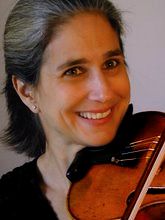| CONSTANCE MEYER Articles |
| Los Angeles Times Music Articles by Constance Meyer | ||
|
Sunday CALENDAR CLASSICAL MUSIC Series: |
|||
|
Orchestra Musicians and their instruments |
|||
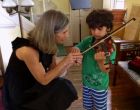 The Mom-centric method
(this
writer coined the phrase!) The Mom-centric method
(this
writer coined the phrase!)The popular and successful Suzuki system of teaching a child a musical instrument -- begun by a Japanese violinist in the 1940s -- takes a family commitment.... GROWING up in South Korea, Connie Paik took music lessons for granted. "Every child learned the piano," she recalls. "It was a basic, just part of the curriculum: math, science, piano, etc. If your parents didn't start you on piano, then there was something wrong with your parents... READ |
|||
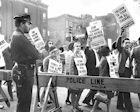 How
a teachers' strike taught me to love opera
*New! When New York teachers went out on strike in 1968, I became a reluctant
student of Puccini's 'La Boheme.' How
a teachers' strike taught me to love opera
*New! When New York teachers went out on strike in 1968, I became a reluctant
student of Puccini's 'La Boheme.' I was a 16-year-old student at the High School of Music and Art in New York when the cityís teachers began a series of walkouts in 1968 that continued for months. There was no way I was going to cross a picket line, so like thousands of other kids I was left with a lot of time on my hands. Those days have been on my mind this week, as Iíve thought about... READ |
|||
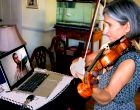 Beverly Hills teacher finds violin and Vivaldi in a time of war
*New! Beverly Hills teacher finds violin and Vivaldi in a time of war
*New!Her violin student struggles to keep learning while ISIS attacks approach and Yazidis flee. I teach violin in Beverly Hills, and this summer I received an unusual request. Jonathan Hollander, a choreographer and founder of the nearly 40-year-old Battery Dance Company in New York, contacted me through mutual friends. Hollander was looking for a violin teacher for a 24-year-old student in Erbil, Iraq. What persuaded me... READ |
|||
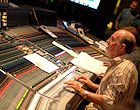 Capturing a sound that rings true
*just
added! Capturing a sound that rings true
*just
added! Immortalizing a performance takes more than hanging a mike and hitting 'record.' There's an art to these engineers' science. Rick RUBIN, George Martin, Timbaland, Brian Eno, Phil Spector -- the average pop music fan, if asked, could probably come up with at least a handful of names of notable recording personnel. It seems fair to say, though, that the typical consumer of orchestral and chamber music recordings, faced with the same question, would draw a blank... READ |
|||
 Fiddling
her way through history Fiddling
her way through historyFor almost 60 years, studio musician Irma Neumann has fiddled while Rome burned and the Titanic sank -- twice. Even if you sit through the end credits of a movie, watching the crawl that lists all the little people who belong to unions requiring that their contributions be acknowledged, you're still not seeing the names of a host of anonymous laborers in the filmmaking process. If a picture has a big symphonic score, the credits may be missing as many as... READ |
|||
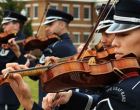 Beyond
the brass bands Beyond
the brass bandsAmong the U.S. military's scores of musical ensembles are top string players who can spend their entire careers based in the nation's capital. IN October 1944, Stuart Canin was an 18-year-old violinist bound for Juilliard. Then he was drafted. His basic training was even cut short by four weeks, so that he and other new recruits could get to Europe as quickly as possible. ..."I carried my rifle and a fiddle," recalls Canin, concertmaster of the Los Angeles Opera. "I still remember... READ |
|||
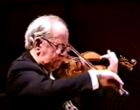 Auer to Heifetz to
... Auer to Heifetz to
...At age 89, master violinist Abram Shtern keeps his impressive musical lineage going through a host of adoring students. Apart from a select group of musicians, few people have heard of the violinist Abram Shtern. Unlike the late Jascha Heifetz, say, he has never felt obliged to travel incognito to avoid being recognized. Yet in July, "Abram Shtern Day" was declared during the first Montecito Summer Music Festival, and 112 students from 11 countries, along... READ |
|||
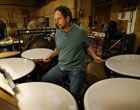 Percussionists
make up a precision strike force Percussionists
make up a precision strike forceNew music and technology have them taking up a whole new world of noise toys, but L.A. pros agree that one thing hasn't changed: Accuracy is key. The percussion section stands at the back of the orchestra, facing the conductor, gladiators poised for battle. These warriors are armed with their bare hands, mallets, sticks and scores of other utensils that can tap, hit, scrape, shake, pound, bow -- you name it -- to get a response from literally thousands of instruments. Kiddie percussion kits... READ |
|||
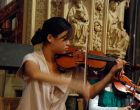 Second violinists are first-class musicians Second violinists are first-class musiciansSupporting the first violinist in an orchestra or a chamber group requires 'a different kind of virtuosity,' but no less proficiency. Dan Nobuhiko Smiley is principal second violinist for the San Francisco Symphony. He laughs at his title: "Sounds like an oxymoron. How can you be a principal and second at the same time?" READ |
|||
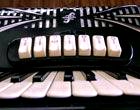 Polka? Nah, think Prokofiev Polka? Nah, think ProkofievRanked just above the kazoo in some musical circles, the accordion has had a long-standing and illustrious past outside the U.S. Maybe someday it'll get a little respect. MOST people think of the accordion, if they think of it at all, as a social instrument, wheezing out polkas and folk tunes. The sound of it brings to mind French cafes, Mexican plazas, German beer gardens, Argentine nightclubs.... READ |
|||
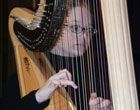 Heaven for a plucky few Heaven for a plucky fewFor its players, harps set the gold standard with an ethereal `carpet of sound.' ANYONE attending a symphony concert can spot the gorgeous, gleaming harp, even from the last row of the last balcony. Children and adults alike gasp at the size of it, at its sparkling gold crown towering above the musicians. Lou Anne Neill, principal harpist of the Los Angeles Philharmonic for the last 24 years, remembers the first time... READ |
|||
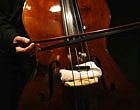 It's always the heavy It's always the heavyWhether its tones are signaling dread or enforcing the ensemble's pitch, the bass makes an unmistakable mark. Just don't try to fly with one. HEARD the one about the double bass player from the Metropolitan Opera who takes a night off to attend a performance of "Carmen"? Afterward, he rushes backstage to see his colleagues from the bass section. "You know where we have those long plonk, plonk, plonk, plonks?" he exclaims. "You wouldn't believe what the violins are... READ |
|||
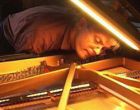 Pulling
strings to get it right Pulling
strings to get it right When the stakes are high but the instrument's an unknown, many pianists insist on the technician they trust to put a performance in its best light. UNTIL just recently, a violin soloist took for granted that she could carry her fiddle with her on an airplane. A concert cellist was able to buy a seat for his instrument whenever he flew. But even before heightened airline security, concert pianists were not so lucky: Almost all of them must leave their humongous, beloved instrument at home... READ |
|||
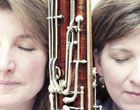 Symphonic spine Symphonic spineThe bassoon, elusive but essential, gives its fellow woodwinds a bracing backbone. FRANK ZAPPA once wrote, "The bassoon is one of my favorite instruments. It has the medieval aroma -- like the days when everything used to sound like that.... It's a great noise -- nothing else makes that noise." READ |
|||
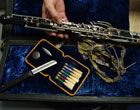 A mournful cry of 'ahhh' A mournful cry of 'ahhh'The curvy English horn requires its player to pack a lot of wind -- the better to produce those sad sounds. And watch out for the razor blades. Decades ago, Ripley's Believe It or Not clued readers in about the English horn. The instrument, it declared, is "neither English nor a horn." ...In fact, there's little agreement about where the name of this double-reed woodwind, a member of the oboe family, came from -- only consensus that it's a misnomer. READ |
|||
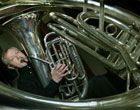 The
tuba, a.k.a. the bass of the brass The
tuba, a.k.a. the bass of the brassTuba players may be the Rodney Dangerfields of the orchestra, but the instrument has come a long way since its creation in the 1830s. Children of the '50s and '60s may remember "Tubby the Tuba" -- the story, set to music, of a very shy brass instrument in a symphony orchestra. All Tubby wants is a solo. If his saga rings a bell, however, it's probably because of the narrator of the 1947 recording, Danny Kaye, and not the tuba player, Los Angeles musician George Bouje, who... READ |
|||
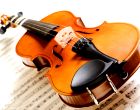 They're hardly second string They're hardly second stringThe viola doesn't get much respect, as an entire genre of jokes proves. But try building a quartet without one. Few violists are born. Most have the instrument thrust upon them. In fact, the viola -- the overlooked stepchild of the orchestra's string section -- is rarely studied as a first instrument at all. Until fairly recently, the road to mastering it invariably went through years of study on the violin, which is both smaller and pitched a fifth higher. READ |
|||
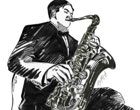 On a more serious note On a more serious noteThink saxophone and you likely won't think symphony. But it's just not 'Bolero' without one. Many of today's symphony orchestra instruments have been around for centuries. The violin, for instance, dates to the 1500s and as a result has an enormous repertoire spanning 450 years. The saxophone, by contrast, wasn't invented until the mid-19th century, so it missed the Baroque and Classical periods entirely and, because it was known... READ |
|||
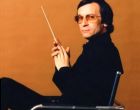 Soviet Conductor Surpasses Translation Soviet Conductor Surpasses TranslationConstance Meyer is a Los Angeles violinist who played in the orchestra during the Kirov Ballet engagement in Shrine Auditorium. Working with a great conductor is not a common event. But, like the thrill of seeing the Kirov, it is an experience to treasure when it happens. ...The local musicians selected to play during the Kirov Ballet's one-week engagement here had one day of rehearsal preceding the first "Swan Lake" last Wednesday. In the rehearsal room... READ |
|||
|
Copyright 1986-2013 Constance Meyer. All rights reserved |
|||
|
Constance Meyer is a Suzuki-certified violin teacher who has taught violin in Beverly Hills for the last 20 years. A native New Yorker, Constance studied violin with Louise Behrend for 7 years at Juilliard in the pre-college division. Behrend was a pioneer of the Suzuki method in the U.S. Constance's violin performances in films, TV and concerts number in the hundreds, and her teaching experience also includes teaching Music History and Repertoire classes at the Colburn School in Los Angeles for students of Colburn's noted Jascha Heifetz Chair Robert Lipsett. At the Mirman School for Gifted Children (LA), Constance co-founded and ran the Suzuki violin program for four years. Her broad range of teaching experience and respect for each child's individuality are qualities that give Constance an exceptional basis for working with homeschooled and gifted children. Constance is also a journalist whose extensive series on classical music for the Sunday LA Times ran for over two decades. In 2003, she authored the widely referenced article about the Suzuki method, "The Mom-Centric Method" for the Los Angeles Times, titled with the phrase she coined to describe the most prominent element in Suzuki teaching philosophy. The article is referred to by hundreds of sources and is cited in the Wikipedia entry on Suzuki method. Constance also studied French and Russian, earning a BA in Slavic languages from UCLA. She is passionate about giving students a solid base for a lifetime of rich experience through understanding music. Constance believes that with the right foundation, students can build skills, brainpower, and confidence. |
|||
|
- A. Tripp |
|||
|
|
|||
|
Site created, optimized and maintained by A. Tripp, TrippPR@gmail.com |
|||
